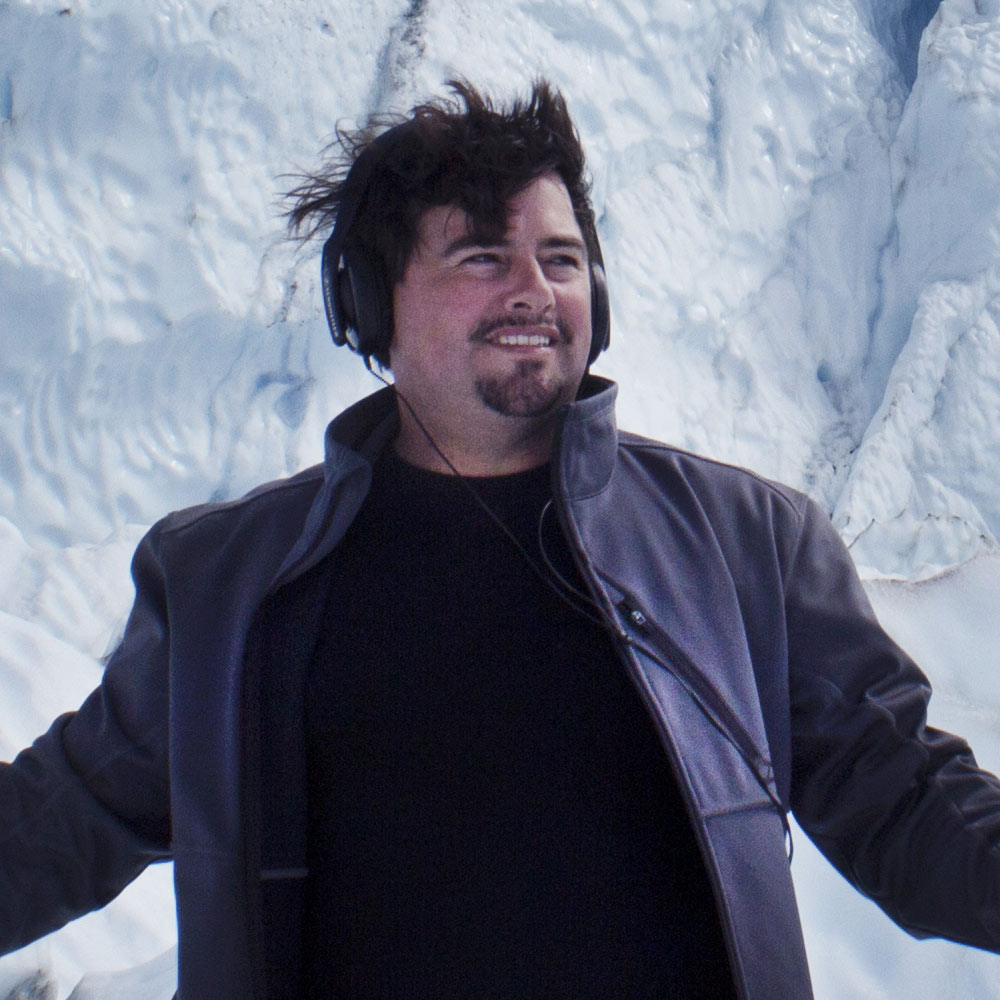
Matthew Burtner lifts the veil between humanity and its planet on PROFILED FROM ATMOSPHERES, translating its messages into an intimate medium invariably understood amongst its inhabitants. The result is an eerie, haunting sonification that serves as a poignant reminder; if we want to continue hearing the songs of the atmosphere and the planet it blankets, it’s our responsibility to preserve it.
Today, Matthew is our featured artist in the “Inside Story,” a blog series exploring the inner workings and personalities of our composers and performers. Read on to learn about Matthew’s ongoing musical collaborations with the natural elements of our world, and the Phillip Glass performance in Albuquerque that forever altered his definition of opera…
If you weren’t a musician, what would you be doing?
I’ve always been interested in ideas and in the natural world. Sound art and music offer special ways to understand the connection between the mind and the environment. I’ve chosen to create and publish the music, but I suppose that both environmental science and philosophy would be incredibly rewarding fields for me. There is always a conceptual or environmental framework at the core of my music.
If you could collaborate with anyone, who would it be?
I would love to collaborate with a filmmaker or video game designer on a soundtrack that crosses between film score, foley, and sound design. The kind of work I imagine creating doesn’t exist to my knowledge so I don’t know who that collaborator would be. But my new EcoSono Studio remodel was designed for immersive soundtrack scoring so I’m ready!
Meanwhile, collaboration is a big part of my work, and I am lucky to enjoy a number of long-term collaborations with innovators in diverse fields. Currently I am collaborating with playwright Chantal Bilodeau on a music theater work about a glacier in Iceland, with environmental scientist Ajay Limaye on global river geometry sonifications, with choreographer Jody Sperling on a new dance music piece for her Time Lapse Dance, with Legs on the Wall public activism theater company from Australia on a piece for performance in London and Antwerp, and with environmental scientist Matt Reidenbach on oyster reef restoration ecoacoustics. I am excited to continually discover how music can be engaged in the world, how it can participate in and inspire other fields of knowledge.
Some of my most meaningful work also features ongoing collaborations with rivers, mountains, glaciers, animals, plants, and all the unique places that imbue my music. These collaborations with non-human beings are equally important to the human arts, and we should think of them as collaborations.
What emotions do you hope listeners will experience after hearing your work?
My music crosses a range of emotions that are best felt by listening to the music and thinking about the concepts behind the sound. The material sound and the conceptual idea are in counterpoint, and the complexity of the emotional response will hover in a space that’s different for each listener activated by the sounds and the ideas together.
Where and when are you at your most creative?
I find walking creatively invigorating. Sometimes I track the distance and participate in virtual races that challenge me to walk many miles each day, often at night when the duties of the day are over. I will often compose while I walk, recording memos on my phone. The time and place are less important than the walking itself.
What’s a great performance you’ve ever seen, and what made it special?
I saw Philip Glass on tour back in the 1980s when I was a college student at St. John’s College in New Mexico. His ensemble performed one of his chamber operas, 1000 Airplanes on the Roof, in a rock club in Albuquerque and I was impressed by the singularity and originality of the production, particularly how an idiosyncratic musical piece could engage so directly with modern American culture. It was out there in a normal club, not tucked away in a university or concert hall. It had a buzz of something special and original, which turned out to be quite a rare feeling for me with concert music. This performance gave me a sense of “opera” as a modern form that could describe singular staged musical productions, not necessarily tied to a specific genre. The performance inspired my own environmental media operas like Kuik and Auksalaq.
What musical mentor had the greatest impact on your artistic journey? Is there any wisdom they’ve imparted onto you that still resonates today?
Barbara Jazwinski — a Professor of Music at Tulane University where I received my undergraduate degree — was a wonderful mentor who helped me find my way in music composition. Her belief in my music helped me trust my instincts and blossom as an artist. Her own music is intricate, sophisticated and focused, and I approached composition with a seriousness of purpose because she expected her students to do that, and she set a strong example herself. At the same time, what sets Jazwinski’s music apart from other high modernism composers is her focus on the emotional impact of music. She taught me that music can be both intellectual and emotional at the same time; it can be complex and conceptual, while still impacting a listener viscerally and emotionally. This wisdom about the multi-faceted nature of music, its ability to engage a listener in many ways, to hit on intellectual and emotional levels simultaneously, is something that still resonates with me today. I compose layers of potential engagement into the music, so hopefully listeners can approach the work in different ways and at different levels of engagement.

Matthew Burtner is an Alaskan-born composer, sound artist, and eco-acoustician whose work explores embodiment, ecology, polytemporality, and noise. His music comfortably crosses boundaries between environmental science and art, philosophy and acoustics, technology and body, and he is a leading practitioner of climate change music and ecoacoustic sound art. As a composer, Burtner seeks out contexts where critical issues of human/nature interaction are addressed, whether in musical contexts, other forms of media, scientific conferences, or political conventions. His music has been performed in concerts around the world and featured by organizations such as NASA, PBS NewsHour, the American Geophysical Union (AGU), the BBC, the U.S. State Department under President Obama, and National Geographic.

